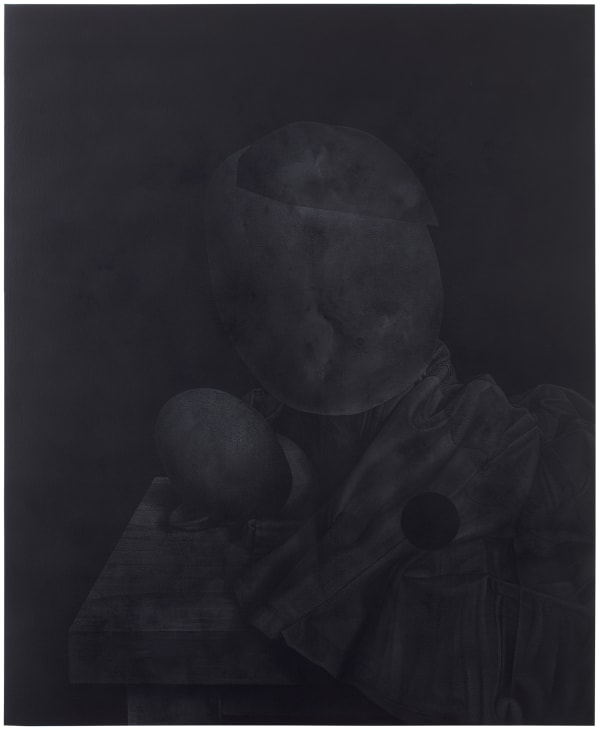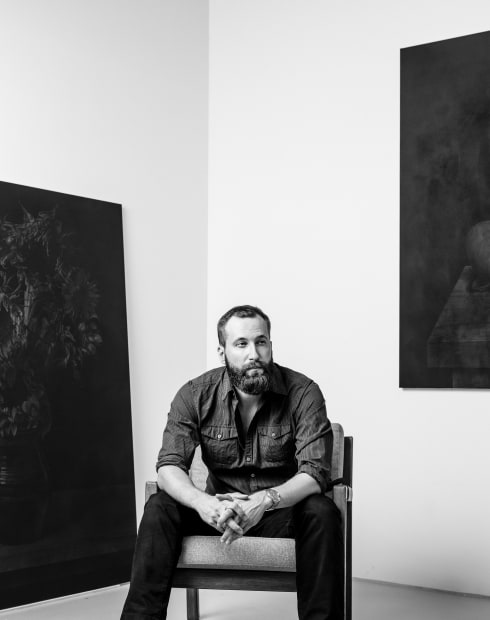-

-
-

KARI VEHOSALO
Wanderer, 2022oil on canvas60 x 47 cm -
-
 Kari VehosaloObject, 2021–2022oil and charcoal on copper plate2 x 30 x 20 cmView more detailsSold
Kari VehosaloObject, 2021–2022oil and charcoal on copper plate2 x 30 x 20 cmView more detailsSold -
 Kari VehosaloThere is a gap in between, where I end and you begin, 2021–20223D scan + selective laser sintering,
Kari VehosaloThere is a gap in between, where I end and you begin, 2021–20223D scan + selective laser sintering,
polyamide, acrylic, stainless steelobject 23 x 25 x 15 cm
with pedestal 155 x 34 x 34 cm
1 + 1 APView more details
-
-
-
VEILS AND FILMS
The paintings are on the one hand easy to look at: they are skillfully painted and assembled – eye-pleasing, so to say, but on the other hand it seems Vehosalo very carefully and deliberately goes on and beyond to make obstacles to the process of viewing: in Still Life he paints a light, nearly transparent film on top of one painting, smudging our view. The film strips are disintegrating from its edges, and are punctured with holes – openings, that paradoxically don’t offer any clearer viewpoints. The lighter-coloured film seems to be the only thing depicted as in focus in the painting, it seems the plant and its surroundings are permanently out of reach.
Blurring the borders of images refers to an idealized tradition of illustrating fairytales or fantasies, and on a larger scale, combined with the nostalgic sepia, could be read as a comment to the limits of our eyesight, formation of meaning, and to the fading limits our memory. Memories too are filled with holes, tend to fade from their edges, transform, and end up covered in dust, isolated from the reality that gave birht to them.
Holes and films, the charcoal powder covering the surfaces, or light coming from within the painting function as a disturbing element, breaking an illusion of an image, but in some works this disturbance becomes the main feature. If curtains in an interior in some of Vehosalo’s earlier works were adding to a pressuring atmosphere of not knowing, they now take up the entire canvas and consume our imagination as a whole. Most prominently this is visible in the painting Icon nodding to Malevich, where the black void deepens towards the center as if devouring us into its darkness. As in Malevich’s square, the black here could also be seen as the representation of something sacred, or equally as the absence of it. The symbolic identification is reduced to its limits: there is nothing looking back at us, except for what we carry within us and bring to the room.
-

-

photo: Sakari Piippo



















